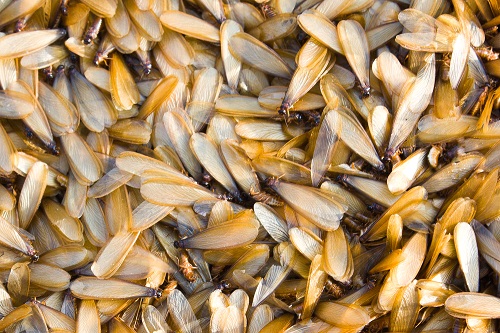
Spring is undoubtedly a beautiful time of year, with its blooms and rising temperatures. However, the warmer weather also signals peak pest season – bringing along unwelcome critters like termites in droves.
These pesky creatures can cause extensive damage to our homes if not properly addressed! Fortunately for homeowners everywhere, preventive measures are available to help protect your property from unpredictable threats such as these.
Termites have been a major problem in homeownership for more than 120 million years, and yet they remain largely undetected until the damage has already been done.
These social insects establish colonies within the wood or underground near properties, consuming cellulose-based materials like paper as sustenance – to such an extent that approximately $5 billion of property destruction is caused annually by their activity alone. To combat this issue it’s important to not only be aware of termite life cycles but also of potential signs suggesting termite infestation around your home – from which costly repairs could ultimately arise if left untreated.
Life Cycle of Termites
With an estimated 2,000 species worldwide and at least 50 in the US alone, termites are a diverse genus of insect. Typically divided into subterranean, dry wood and damp wood colonies based on their habitats; these groups consist of workers responsible for maintaining the nest structure as well as gathering food supplies to sustain it – with soldiers offering protection against intruders. Interesting note -while both worker ants and soldier ants lack wings!
In spring, when temperatures hit roughly 70 degrees Fahrenheit and the last freeze has passed, swarming termite reproductives emerge in search of mates. The females attract potential partners by releasing pheromones akin to human perfumes. After a male locates an alluring female partner from among the swarmers, they break off their wings as a sign of union before finding together a nest location – whereupon they become king and queen for life over the new colony formed after mating; queens are known to live up 30 or more years!
While colonies of subterranean termites can become mature and reach their full potential in as little as three to four years, it often takes far longer. Initially laying between 0-22 eggs per year, the time required for a colony to grow large enough to cause visible damage varies drastically depending on species; while some may contain up to 75 individuals after one year, others will only have around 12 members.
In colder regions, establishing a termite colony can be a tricky task. Despite their difficulty to survive the winter temperatures, colonies may still form in two ways – when infested wood is brought into an area or from the division of an existing colony. When food sources become scarce for one particular group and attract more nymphs than it can handle at once; this triggers division as part of its survival strategy where these subcolonies are able to replenish themselves with new reproductives born from nymphs and establish a totally separate entity on its own right!
Signs of Termite Infestation
Despite the common misconception, termites in Myrtle Beach can be a year-round problem – especially in warmer climates. Subterranean termite activity remains hidden from view but is no less destructive, as they work tirelessly around the clock to eat away at wood structures and foundations. The shed wings that are sometimes seen during springtime swarms provide just one of many indicators confirming their presence all season long.
Call Zap Pest Control Inc. now if you need the help of an exterminator in getting rid of pests on your property.
Like our Facebook page for more great info about pest control services.
Zap Pest Control Inc.
2507 Forestbrook Rd Suite G
Myrtle Beach, SC 29588
843-654-1927
http://zappests.net/

No comments:
Post a Comment